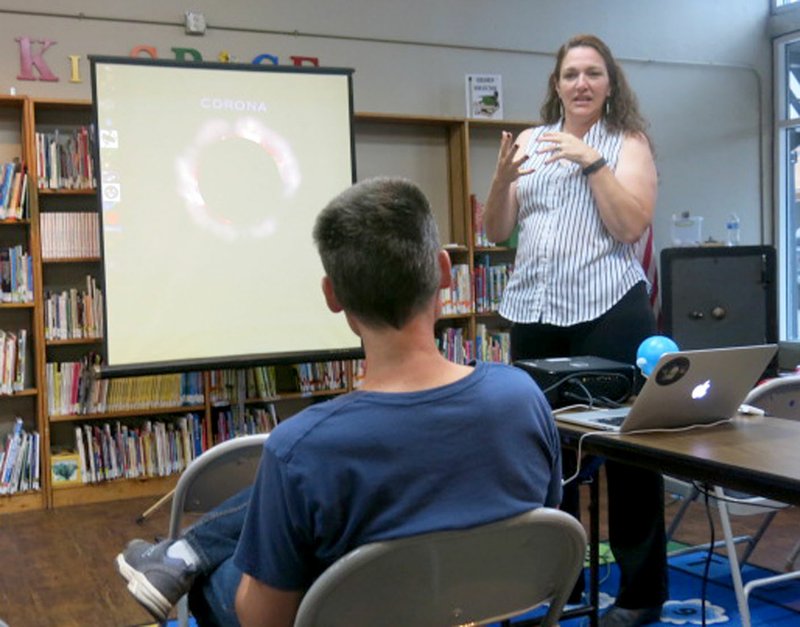GRAVETTE -- Katherine Auld, president of the Sugar Creek Astronomical Society, presented a program Thursday, Aug. 3, at the Gravette Public Library, focused on the upcoming Great American Eclipse which will cross the United States on Aug. 21. Peak time for the eclipse in Gravette will be at 1:11 p.m., Auld said, with a 93 percent partial eclipse over the town at that time. Total time for the eclipse in the area will be from about 11:45 a.m. to 2 p.m.
Auld explained that an eclipse occurs when the moon gets between the sun and the earth. The eclipse path this year is narrower than most, she said, since the moon is farther away. The best views of the eclipse will be in the St. Joseph, Mo., area and approximately 100,000 people are expected to gather at the airport there during the event.
Auld's presentation included slides showing the projected path of the eclipse and approximate times when it would occur across the United States. She told about six NASA missions which will be ongoing doing scientific observations during the eclipse, including hot air balloons which will be released to monitor temperature changes that occur. Several citizen groups also plan eclipse connected projects. These include ham radio groups and Life Responds, an organization that will study how animals react to the event.
She showed a short video, "Wonders of the Solar System," and a slide showing the large telescope the Astronomical Society recently transported to Northwest Arkansas. Donations are being sought to build a structure to house the telescope, the sixth largest in the United States. Auld hopes the building will be a dome shape, she says. When a location is chosen, it is hoped the building can house an observatory on one end and a planetarium on the other, with a full science center in between.
At the conclusion of her talk, Auld reminded those present that solar viewing glasses are available at the library, located at 119 Main Street S.E., and also at Austin Drug, Teasley Drug and the Gravette Eye Clinic, while supplies last. Anyone who would like a pair is encouraged to pick them up as soon as possible and read the instructions on the glasses carefully. They were donated to the library by the Space Science Institute's National Center for Interactive Learning.
Auld teaches at Northwest Arkansas Community College and has a background in geology and a PhD in space and planetary sciences. She is a solar system ambassador with NASA and the Jet Propulsion Laboratory and is the board chair of Supporting STEM and Space, the nonprofit organization that recently donated a telescope to the Gravette library.
General News on 08/09/2017

